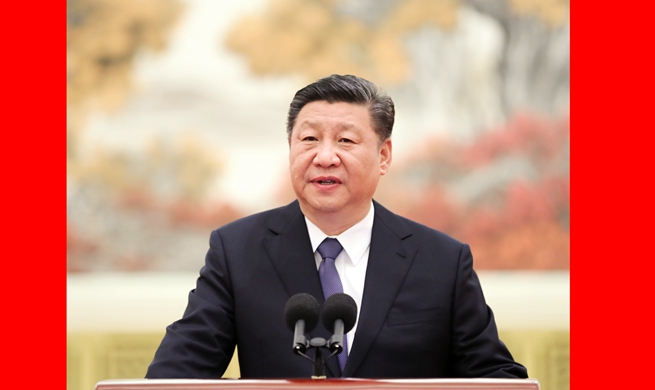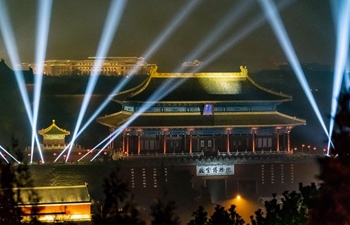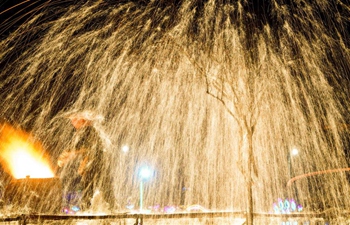by Julia Pierrepont III
LOS ANGELES, Feb. 20 (Xinhua) -- The high-speed train project was a dream of former California Governor Jerry Brown for affordable, environmentally-friendly public transportation. But the fledgling bullet train project in the U.S. state was derailed last week.
Former mayor of San Francisco and newly-elected Governor of California, Gavin Newsom, sidetracked the initiative.
The Democratic governor did so days after the national Democratic leadership released their "Green New Deal" to dramatically cut U.S. carbon emissions, including an extensive high-speed rail network expected to replace intrastate, short-haul flights and long-haul car trips.
Newsom said during a speech last week, "The current project, as planned, would cost too much and respectfully take too long."
Originally planned as a 850-km rail system linking San Diego, Los Angeles and San Francisco, California's bullet train is years behind schedule and, according to the state audit report, 600 million U.S. dollars over-budget. And its original price tag of 39 billion dollars has spiraled to estimates as high as nearly 100 billion dollars.
This grim fiscal reality, plus legal, political and environmental challenges that have impeded the full-length coastal line from its inception prompted Newsom to dial it down a notch to a more modest 257-km link in California's rural, sparsely-populated, inland Central Valley.
That is "a region hungry for investment ... good jobs," Newsom said. "The high speed rail project can be part of that." He dismissed criticism that he's building a "line to nowhere," justifying the truncated route as a way to reinvigorate the local economy.
"We can align our economic and workforce development strategies, anchored by High Speed Rail, and pair them with tools like opportunity zones, to form the backbone of a reinvigorated Central Valley economy," said the governor.
U.S. President Donald Trump demanded California return 3.5 billion dollars in federal high-speed rail money after Newsom's speech. The U.S. Department of Transportation also announced Tuesday that it plans to cancel 929 million dollars awarded to the project and wants the western state to return an additional 2.5 billion that it has already spent. In response, Newsom has vowed a fight to keep "California's money."
Maria Salinas, head of the Los Angeles Area Chamber of Commerce, told Xinhua that while the Chamber appreciates the governor's commitment to not wasting public resources already spent on the project, it is concerned that the scale of his rail "is not adequate to meet the needs of a growing, geographically diverse state."
At the same time, some bullet train advocates see a significant silver lining to building the Central Valley line first.
Rick Harnish, executive director of the Midwest High Speed Rail Association told media, "If the high-speed line can be connected to commuter rail lines serving the Bay Area or other transportation from Los Angeles in the south, it could be a success."
"We cannot financially sustain forcing everyone to drive a car for every trip they want," Harnish continued, voicing the urgent rationale for a greener rail system.
"It's not good for people's health, not good for our communities, not good for the environment. We need a game-changer like high-speed rail to reconnect people," he said.
USA Today reported that Karen Philbrick, executive director of the Mineta Transportation Institute at San Jose State University in the Bay Area, sees the economic impact of high-speed rail as more far-reaching in scope and a potential key solution to the state's housing shortage.
"I am thrilled the project will continue in the Central Valley, but I think it's a missed opportunity not to extend it as originally conceived," she said, disappointed that the new program won't provide the commuter options for LA- or SF-based employees seeking affordable housing outside the city.
Currently the United States relies on an aging, outdated rail infrastructure and is lagging far behind areas like China and Europe. Many bullet train advocates think it's essential to have high-speed rail built in the United States.
"It's so important to get one up and running," said Andy Kunz, CEO of the advocacy group, U.S. High Speed Rail Association.
"By focusing on a single working leg, Newsom can show people the potential - building enthusiasm that could foster other projects around the country."













